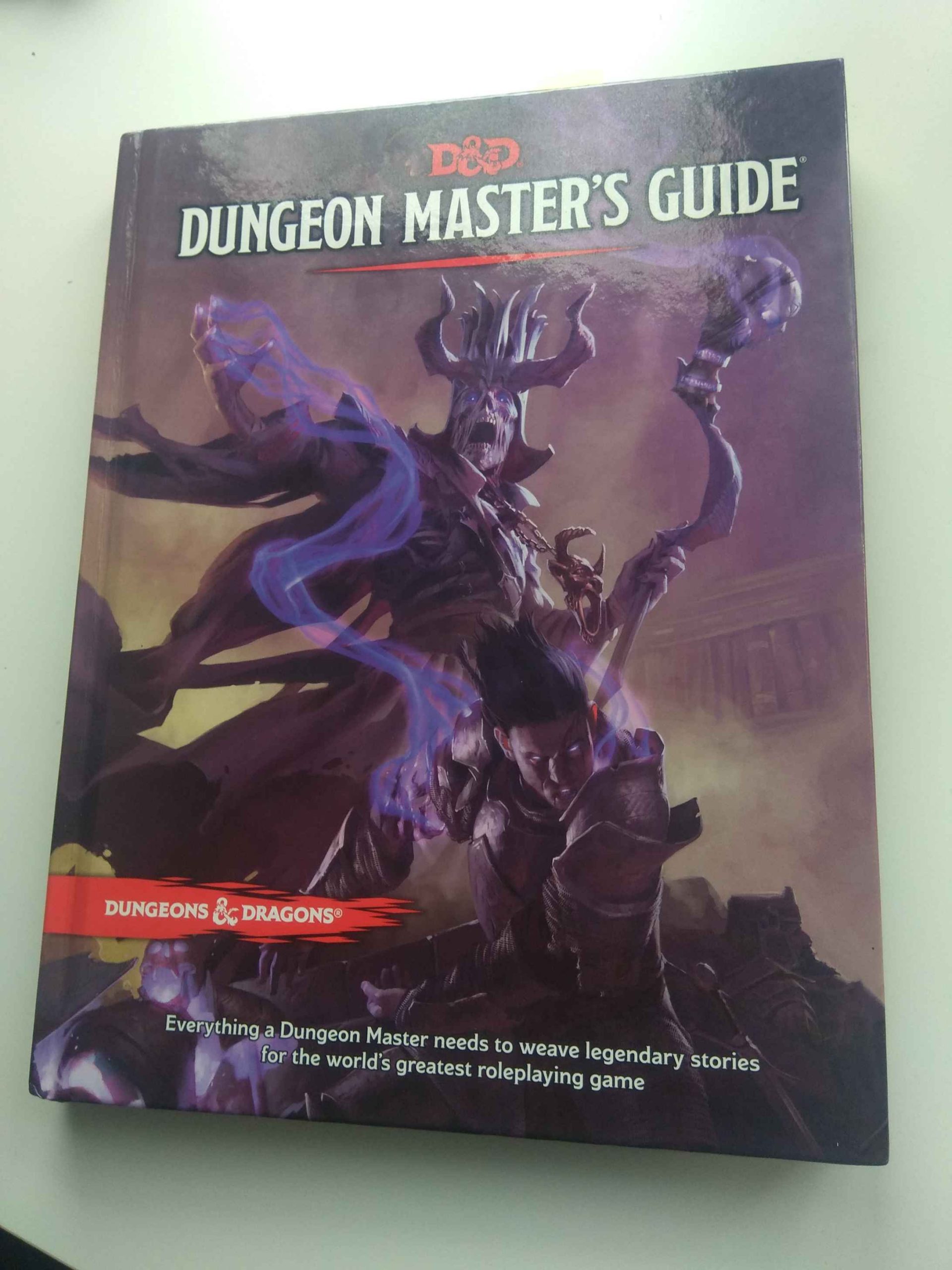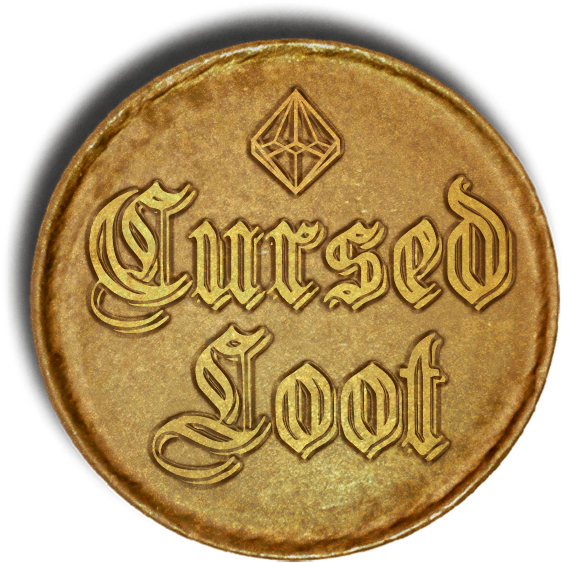The quintessential of all DM’s tools, this book contains a wide array of helpful content which you will be using for years to come.

Welcome to the rabbit hole’s precipice. Are you ready to jump in? So far, your D&D resources are probably scattered across many notes, links, folders and bookmarks. Now, I’m not saying you won’t be using those anymore. I’m just saying that the DM Guide is such a nice, pretty and valuable addition to your collection which will always inspire you in many ways.
The book is divided into 3 parts, with 4 appendices at the end. Each part focuses on a huge aspect of the game, from mechanics to creativity. The beauty of this game lies in the DM’s freedom – all the rules are optional and some exist in more variants. This book is called a “guide” for reason, because it only offers choices, not requirements. No matter what you take away from it, its goal is simple and straightforward: it teaches you how to be a better dungeon master.
So let’s jump in!
Part 1 – Master of Worlds
The book opening introduces (new) DMs to the whole premise of Dungeons and Dragons – building your own fantasy world. Every DM has their favorite part of this process, from creating NPCs and fun combat encounters to painting majestic creatures and landscapes. However, we might lose some important detail or puzzle piece when brainstorming. This is where Part 1 comes in: it eases your mind into that sweet spot of percolating ideas. It covers religious orders, map scaling, settlements, languages, factions and magic. After that, you get many insights and mechanics of creating your own campaigns, settings, styles and tiers. And that’s only Chapter 1!
Chapter 2 covers the multiverse, i.e. the planes of existence. This is for DMs with a bit more experience as it elevates the mechanics a bit. But, when you get tired of the Material Plane, pay a visit to the Feywild, the Elemental Planes or Hades itself! The book gives handy and colorful explanations for each plane, as well as a guide to making your own.
Part 2 – Master of Adventures
While Part 1 serves as a repository for ideas, Part 2 gets into the meat of your campaign. So, you have this really cool villain or plot hook, but you’re not sure how to tie it into a story? Chapter 3 will tell you all about what makes a campaign awesome and how to structure it. We all want to feel recognized for the stories we tell. The handy roll tables can halp you quickly set up the whole timeline of your adventure, from start to finish. Much thought went into writing the sections on surprises, mysteries, intrigues and twists. Also, here you will learn how to build encounters.
Chapter 4 is about creating NPCs (non playable characters) and villains, with lots of personality info and roll tables for fleshing them out. There is a world of difference between a bland and a vivid NPC or villain. By creating these lively figures we make players remember them and want to interact with them again. Not only is it entertaining, but it also gives your story narrative wings and propels it to new locations and quests.
Chapter 5 lists all the environments your players might find themselves in, like dungeons, the wilderness, settlements, underwater or in the sky. Dungeons and the wilderness are explained the best, seeing as most encounters and quests take place there. You are guided through the process of making, creating, mapping and equipping your dungeon. You also get advice on how to build various encounters in each environment.
Chapter 6 offers insights on how to link adventures and what to do between them. It also covers downtime activities, which your players can do whenever there is a lot of free in-game time with no important events going on.
This next huge, 100-page chapter is about the things that makes your players’ eyes sparkle: treasure. In here, you will find tons of treasure lists sorted by rarity. They all have their properties explained, and are decorated with delightful images. Acquiring treasure matters most to a lot of players because it makes their character unique and more powerful. If you make the treasure sentient, it can also talk to your players and role-play! You can use the extensive lists to your heart’s content, and your players will definitely be thankful for it.
Part 3 – Master of Worlds
So, now that you have a few sessions under your belt, you’ve probably noticed some issues in running the game. Chapter 8 helps you clarify many concepts like the role of dice, table talk and metagaming, as well as mechanics like using maps, siege equipment or proficiency bonuses. It teaches you how to role-play better, and introduces topics like chases, poisons, characters going mad and many more.
The final chapter is called The Dungeon Master’s Workshop. So, when you first learned to run the game, you probably concluded that its mechanics are fixed. This chapter uproots those beliefs and provides rules variants for abilities, skills, adventuring, healing, resting etc. It also proposes new concepts like firearms, explosives or alien technology. There are new combat options when it comes to initiative tracking, actions, injuries and damage. It ends with extensive guides on creating monsters, spells, magic items and classes.
Appendices
Appendix A contains a whopping 39 roll tables for making your own dungeon. Of course, you won’t need all of them, but they’re a great source of inspiration. You can roll or choose dungeon types, sizes, layouts, purposes, features, obstacles and traps, and even furnishings by type! Why should every dungeon be just another damp, rocky goblin cave? Go crazy with these options and watch as hilarity (and anxiety) ensues!
Appendix B is a short, but useful listing of various monsters, sorted by environment, type and challenge rating.
Appendix C has 9 maps in color: 4 dungeons, 2 cities, a ship, a 3-story house and a windmill.
Appendix D has a suggested list of further reading materials, as well as the alphabetical index of all relevant topics.
Conclusion
There is no doubt that the 5e Dungeon Master’s Guide is a jewel of a book. For around $30, it is definitely worth buying because of the countless ideas and explanations it provides. It is essential for new DMs still learning how to become a good dungeon master, but seasoned DMs will also use it for for inspiration and reference.
You can order the Dungeon Master’s Guide on Amazon through this link.
If you prefer the online version, you can get it at D&D Beyond: Dungeon Master’s Guide 5e PDF.
If all of this seems a bit overwhelming, you can invest into The Dungeons and Dragons Starter Set or the Essentials Kit, which are great for new players.
